 Web Front-end
Web Front-end JS Tutorial
JS Tutorial Overview of js custom events and event interaction principles (1)_javascript skills
Overview of js custom events and event interaction principles (1)_javascript skillsIn JS, events are the main way for JS to interact with the browser. Events are a design pattern called the Observer, which is a technique for creating loosely coupled code. Objects can publish events to indicate the arrival of an interesting moment in the object's life cycle. Other objects can then observe the object, wait for these interesting moments to come and respond by running code.
The observer pattern consists of two types of objects: subjects and observers. The subject is responsible for publishing events, while observers observe the subject by subscribing to these events. A key concept of this pattern is that the agent does not know anything about the observer, meaning that it can exist on its own and function normally even if the observer is not present. Observers, on the other hand, know about the subject and can register callback functions (event handlers) for events. When it comes to the DOM, the DOM element is the subject and your event handling code is the observer.
Events are the most common way to interact with the DOM, but they can also be used in non-DOM code - by implementing custom events. The concept behind custom events is to create an object that manages events and let other objects listen to those events. To put it simply, we hope that when the program is running, there may be many routes. If the program runs to a special place, we hope to run the code in the user registration method immediately, and then continue running after the run is completed. This process is called monitoring. .
For example, create a file MyEvent.js file and create a class in it:
function MyEvent(){
this.handler;
}
MyEvent.prototype={
addHandler:function(handler)
{
this .handler=handler;
},
fire:function()
{
this.handler();
},
removeHandler:function()
{
this.handler=null;
}
}
The above is a class created using the idea of js prototype. If the reader does not know much about it, you can check the relevant information. The MyEvent type has a separate attribute handler, which is used to store the event handler (that is, the method registered by the user). There are also three methods: addHandler(), used to register an event handler; fire(), used to trigger an event; and removeHandler(), used to unregister the event handler.
Then we can use it like this, create a new html file and put it in the same directory as MyEvent.js for easy reference. The code is as follows:
![事件 ID 4660:已删除对象 [修复]](https://img.php.cn/upload/article/000/887/227/168834320512143.png) 事件 ID 4660:已删除对象 [修复]Jul 03, 2023 am 08:13 AM
事件 ID 4660:已删除对象 [修复]Jul 03, 2023 am 08:13 AM我们的一些读者遇到了事件ID4660。他们通常不确定该怎么做,所以我们在本指南中解释。删除对象时通常会记录事件ID4660,因此我们还将探索一些实用的方法在您的计算机上修复它。什么是事件ID4660?事件ID4660与活动目录中的对象相关,将由以下任一因素触发:对象删除–每当从ActiveDirectory中删除对象时,都会记录事件ID为4660的安全事件。手动更改–当用户或管理员手动更改对象的权限时,可能会生成事件ID4660。更改权限设置、修改访问级别或添加或删除人员或组时,可能会发生这种情
 打开win11的分屏交互方式Dec 25, 2023 pm 03:05 PM
打开win11的分屏交互方式Dec 25, 2023 pm 03:05 PM在win11系统中,我们可以通过打开分屏交互来让多个显示器使用同一款系统,共同操作,但是很多朋友不知道分屏交互怎么开启,其实只要在系统设置中找到显示器就可以了,下面一起来学习一下吧。win11分屏交互怎么打开1、点击开始菜单,找到其中的“设置”2、然后在其中找到“系统”设置。3、进入系统设置后,在左侧选择“显示”4、接着在右边的多显示器中选择“扩展这些显示器”即可。
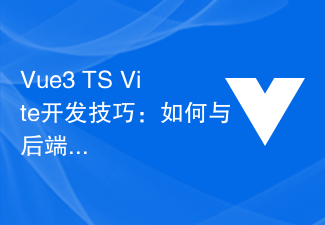 Vue3+TS+Vite开发技巧:如何与后端API进行交互Sep 08, 2023 pm 06:01 PM
Vue3+TS+Vite开发技巧:如何与后端API进行交互Sep 08, 2023 pm 06:01 PMVue3+TS+Vite开发技巧:如何与后端API进行交互引言:在网页应用开发中,前端与后端之间的数据交互是一个非常重要的环节。Vue3作为一种流行的前端框架,与后端API进行交互的方式也有很多种。本文将介绍如何使用Vue3+TypeScript+Vite开发环境来与后端API进行交互,并通过代码示例来加深理解。一、使用Axios发送请求Axios是
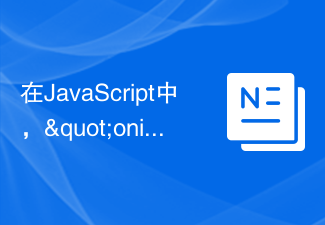 在JavaScript中,"oninput"事件的用途是什么?Aug 26, 2023 pm 03:17 PM
在JavaScript中,"oninput"事件的用途是什么?Aug 26, 2023 pm 03:17 PM当在输入框中添加值时,就会发生oninput事件。您可以尝试运行以下代码来了解如何在JavaScript中实现oninput事件-示例<!DOCTYPEhtml><html> <body> <p>Writebelow:</p> <inputtype="text"
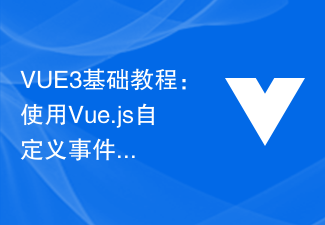 VUE3基础教程:使用Vue.js自定义事件Jun 15, 2023 pm 09:43 PM
VUE3基础教程:使用Vue.js自定义事件Jun 15, 2023 pm 09:43 PMVue.js是一款流行的JavaScript框架,它提供了很多方便的特性,所以它在开发Web应用程序时非常有用。Vue.js中的自定义事件系统使其更加灵活,并且可以通过组件事件触发和处理来实现更好的代码重用性。在本文中,我们将讨论如何使用Vue.js的自定义事件。Vue.js中自定义事件的基础在Vue.js中,我们可以通过v-on指令来监听DOM事件。例如,
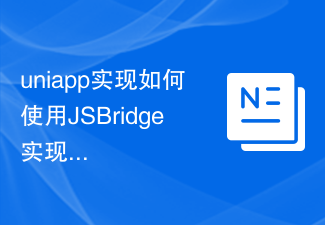 uniapp实现如何使用JSBridge实现与原生交互Oct 20, 2023 am 08:44 AM
uniapp实现如何使用JSBridge实现与原生交互Oct 20, 2023 am 08:44 AMuniapp实现如何使用JSBridge实现与原生交互,需要具体代码示例一、背景介绍在移动应用开发中,有时需要与原生环境进行交互,比如调用原生的一些功能或获取原生的一些数据。uniapp作为一种跨平台的移动应用开发框架,提供了一种方便的方式来实现与原生交互,即使用JSBridge进行通信。JSBridge是一种前端与移动原生端进行交互的技术方案,通过在前端和
 jquery中常用的事件有哪些Jan 03, 2023 pm 06:13 PM
jquery中常用的事件有哪些Jan 03, 2023 pm 06:13 PMjquery中常用的事件有:1、window事件;2、鼠标事件,是当用户在文档上面移动或单击鼠标时而产生的事件,包括鼠标单击、移入事件、移出事件等;3、键盘事件,是用户每次按下或者释放键盘上的按键时都会产生事件,包括按下按键事件、释放按键按键等;4、表单事件,例如当元素获得焦点时会触发focus()事件,失去焦点时会触发blur()事件,表单提交时会触发submit()事件。
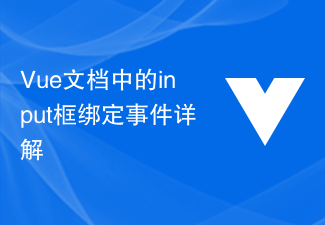 Vue文档中的input框绑定事件详解Jun 21, 2023 am 08:12 AM
Vue文档中的input框绑定事件详解Jun 21, 2023 am 08:12 AMVue.js是一种轻量级的JavaScript框架,具有易用、高效和灵活的特点,是目前广受欢迎的前端框架之一。在Vue.js中,input框绑定事件是一个十分常见的需求,本文将详细介绍Vue文档中的input框绑定事件。一、基础概念在Vue.js中,input框绑定事件指的是将输入框的值绑定到Vue实例的数据对象中,从而实现输入和响应的双向绑定。在Vue.j


Hot AI Tools

Undresser.AI Undress
AI-powered app for creating realistic nude photos

AI Clothes Remover
Online AI tool for removing clothes from photos.

Undress AI Tool
Undress images for free

Clothoff.io
AI clothes remover

AI Hentai Generator
Generate AI Hentai for free.

Hot Article

Hot Tools

mPDF
mPDF is a PHP library that can generate PDF files from UTF-8 encoded HTML. The original author, Ian Back, wrote mPDF to output PDF files "on the fly" from his website and handle different languages. It is slower than original scripts like HTML2FPDF and produces larger files when using Unicode fonts, but supports CSS styles etc. and has a lot of enhancements. Supports almost all languages, including RTL (Arabic and Hebrew) and CJK (Chinese, Japanese and Korean). Supports nested block-level elements (such as P, DIV),

MinGW - Minimalist GNU for Windows
This project is in the process of being migrated to osdn.net/projects/mingw, you can continue to follow us there. MinGW: A native Windows port of the GNU Compiler Collection (GCC), freely distributable import libraries and header files for building native Windows applications; includes extensions to the MSVC runtime to support C99 functionality. All MinGW software can run on 64-bit Windows platforms.

SublimeText3 English version
Recommended: Win version, supports code prompts!

DVWA
Damn Vulnerable Web App (DVWA) is a PHP/MySQL web application that is very vulnerable. Its main goals are to be an aid for security professionals to test their skills and tools in a legal environment, to help web developers better understand the process of securing web applications, and to help teachers/students teach/learn in a classroom environment Web application security. The goal of DVWA is to practice some of the most common web vulnerabilities through a simple and straightforward interface, with varying degrees of difficulty. Please note that this software

VSCode Windows 64-bit Download
A free and powerful IDE editor launched by Microsoft




